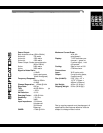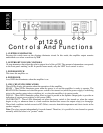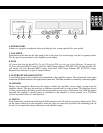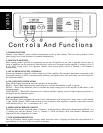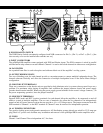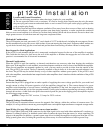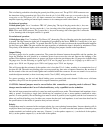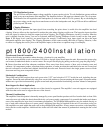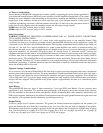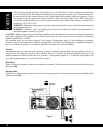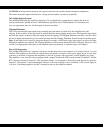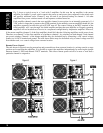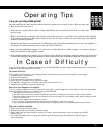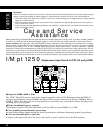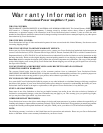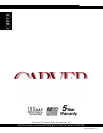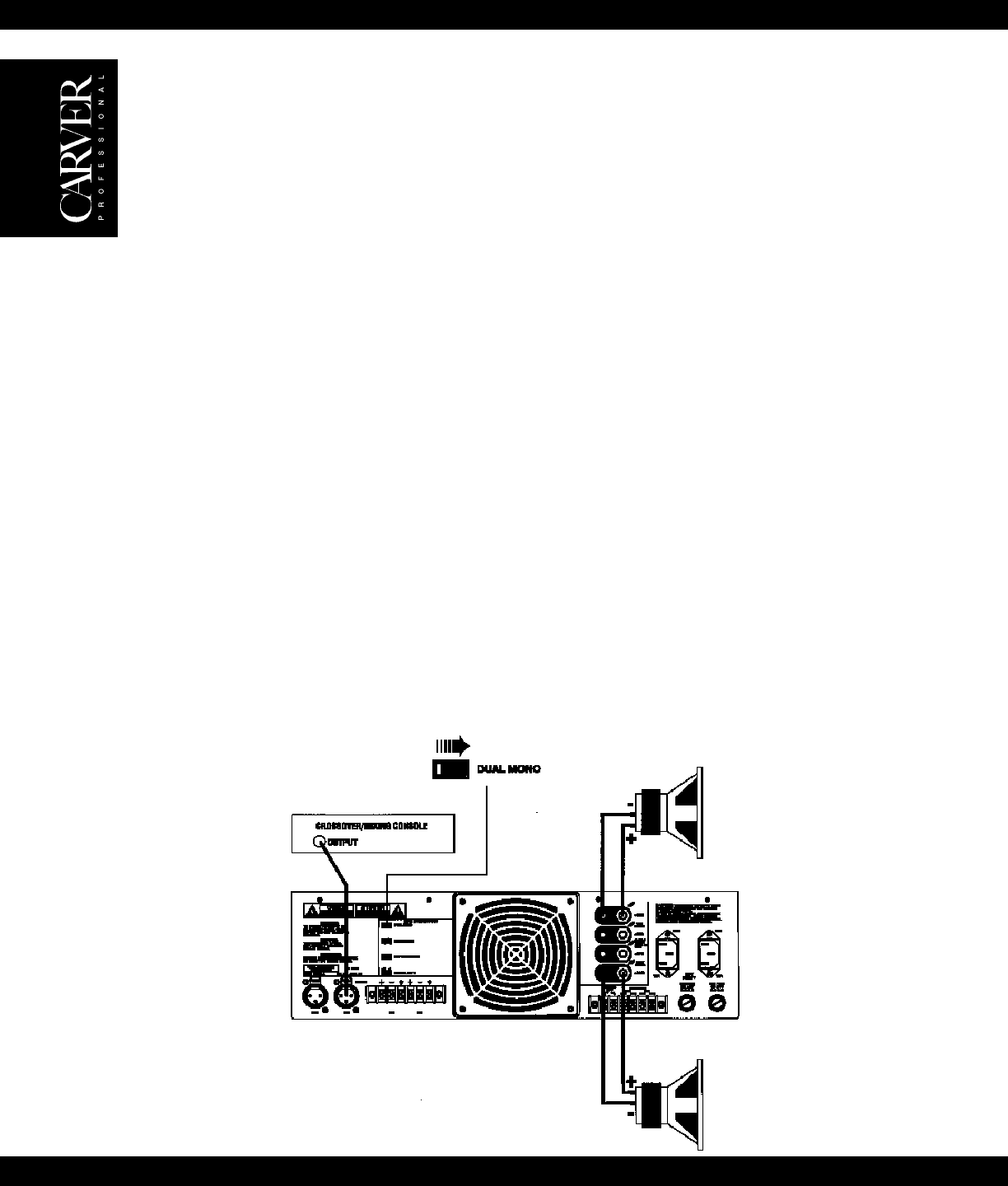
This will insure that the resistance of the speaker wire is less than 5% of 4 ohms, resulting in a transmission
loss of less than 0.5 dB. The multi-way binding posts can accept spade lug, bare wire or banana connections.
Be sure that all the fine strands of the wire are twisted together and contained within the connector. If even
one strand is loose and can touch the adjacent terminal, a short circuit may result. Class I (NEC) wiring must
be used. The pt1800/pt2400 has two sets of output connections per channel. They alternate vertically top to
bottom Ch.1, Ch.2, Ch.1, Ch.2.
WARNING - Hazardous voltages may be present at the output terminals. Never contact the output terminals
while operating the unit.
WARNING - Channel 1 and 2 red binding posts are hot and should never under any circumstances be
connected together or directly to ground.
CAUTION - Make sure the total power handling capability of the loudspeakers or test loads are adequate to handle the
high output capability of the amplifier. Carver Professional will not be responsible for blown loudspeakers. Consult the
speaker manufacturer if in doubt.
For minimum noise, do not connect channel 1 and channel 2 loudspeakers return (-) black binding posts together.
However, doing so will not harm the amplifier or loudspeakers. Use both sets of binding posts if multiple loudspeakers
are to be connected in parallel on one channel. Maintain a minimum of 2 ohms per channel.
Polarity
Loudspeakers must be connected with consistent polarity for phasing between them. Incorrect phasing will do no
physical harm, but frequency response will be affected. The key is to make sure that both speakers connected to the
speaker terminals are hooked up the same way. Connect (-) at the speaker outputs to (-) on the back of the speaker, and
(+) at the speaker outputs to (+) on the back of the speaker.
Dual Mono
Figure 1 shows the rear panel connections for dual mono operation. All selections and connections should be made with
the power OFF.
Bridged Mono
Figure 2 shows the rear panel connections for mono (bridged) operation. All selections and connections should be made
with the power OFF.
16
Figure 1



